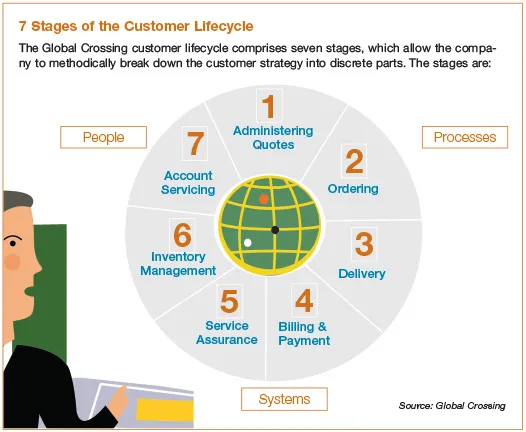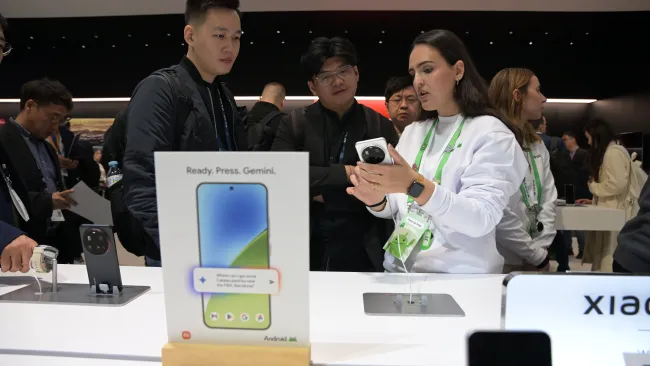Sometime it takes a major shakeup to rethink operations. In the case of Global Crossing, a post-bankruptcy restructuring prompted the telecom company’s leadership to realize that regaining profitability meant increasing its emphasis on getting closer to its customers. Over the past four years the company has been reorganizing around the strategy of building long-term mutual value for its customers and itself. Changes included the creation of customer-facing units that assist sales, service, access management, and support; the integration of the seven touchpoints within Global Crossing’s customer lifecycle (administering quotes, ordering, delivery, billing and payment, service assurance, inventory management, and account servicing); and an internal reorganization, which shifted the responsibility for customer experience to IT rather than having it be a standalone function. Here, Anthony Christie, chief technology and information officer at Global Crossing, discusses the reorganization and how his new role as CTIO helps the company connect every aspect of the business (internally and externally) back to customer experience.
What were the challenges and opportunities that prompted your new, customer-centric approach?
Historically, the telecommunications business was treated as a commodity-driven business. Not much differentiated one provider from another. Today, however, with companies integrating more and more telecommunications products and services into one network, how those services get rolled out, serviced, and delivered does matter.
We at Global Crossing have an advantage. We’re not encumbered with legacy systems, and we have a more analytical, process-driven focus on our seven customer touchpoints, which represent the entire lifecycle of customer experience. This allows us to methodically break down our customer lifecycle into discrete parts. This improves the process, as well as the systems that support the process, and ties it right back to our “culture of customer.”
Additionally, it was from the top that our CEO grew our business. It is not uncommon [for the executive team] to reply to a customer email ourselves. That was born from retaining our customers from the hard days of restructuring. That culture preexisted.

Would you explain the restructuring?
During our corporate restructuring, Global Crossing required tighter, more centralized decision-making controls. Today, we’ve evolved into establishing five customer-facing units (CFUs) to manage our business within EMEA, Latin America, and North America. We also have a fourth CFU dedicated to managing our global carrier customers. This new model puts decision-making closer to our customers.
At a very basic level, CFUs are how we look at our business geographically: Europe, Latin America, the rest of the world, and our carrier business. Each has a level of autonomy, but they are all tied together by customer service and our corporate center.
Our CFU leaders also have greater regional accountability for key components of the business, such as sales, pricing, service delivery, and access. These actions create a closer physical connection with customers and establish greater visibility into their needs. This change also recognizes the need for an “activist” corporate center that assures a consistent customer experience, operational excellence, global branding, and global policies. In effect, our global functions provide a “connective tissue” that binds all of our actions around one corporate identity, one corporate voice, one corporate culture, and one set of consistent messages based on a global vision, mission, and strategy.
Our transition to a CFU structure took approximately a year to plan before being implemented. The idea was born largely from a centralized organization where we had global functions that were accountable for those same individual functions locally. So we had one head of sales, one head of operations and engineering, one head of IT, and one head of service delivery.
As we continued to grow the organization organically, as well as acquired companies, we liked the notion that all roads could lead back to a central organization and you could still be nimble and flexible. Looking ahead, however, it became clear to us that it would be harder and harder to achieve. How do you maintain what is a key part of our value proposition, which is a global network with seamless products and services and a common experience on those products and services regardless of whether you’re in Buenos Aires or Manhattan?
At the same time we looked into local customer requirements, local market opportunities, and the ability to apply capital to local opportunities quickly and accurately. From that, the customer-facing unit model was born. We said, “What will be the key cust-omer-facing unit functions that we will keep regionally and then what would we put in the center?” We decided to put our sales teams, service delivery team, and access management team within each region.
Then we said, “What are the functions we need to keep centrally in order to provide that global seamless experience?” Those include the architecture, the key technology decision support (IT and CRM), the brand, financial functions, HR functions, and global product functions.
What role did customer experience play in the restructuring?
We asked, “What do customers want three years out and what do we need to do now [to prepare for that]?” That was an area we wanted to accent more.
There was a great belief from the leadership team that we needed to formalize and integrate the technology functions to accelerate those efforts, as well as create a central business process function that could help the overall customer experience in terms of documenting and formalizing key processes. We had our customer experience function and a business process function that weren’t central. And, we had our IT function as part of our operations and engineering and we moved that out on its own.
Then customer experience and IT came together, because the customer experience initiative is largely IT and process dependent at this point. I think it’s working well so far after a year. There’s always room for improvement, but the alignment is definitely there. It makes good practical and organizational sense.
Would you describe how the customer experience is IT and process dependent?
Each one of the seven [lifecycle] touchpoints has a number of sub-processes associated with it that are systems related. We constantly circle back with our customers and those people within Global Crossing who interface with customers, to test and improve our processes and underlying systems in support of those processes. For example, our customers told us that it would be easier for us to proactively notify them through their preferred channel in the event of service issues. We implemented that process into our customer portal, which is the vehicle used to view and consume our services.
It is rather unique for someone to move from a marketing role to a technology role and for the CTIO to lead the customer experience. How did your background prepare you for this shift?
There are these nuances in our industry. You can go into a really big organization that is one of our competitors and the marketing title could mean something different there than it means at Global Crossing. There might be some attributes that are similar. But I would offer that the chief marketing officer title at Global Crossing requires a high level of technical proficiency because you have the underlying responsibility for the planning and execution of product roadmaps and we sell technical products. I was our chief marketing officer so I have a fairly good knowledge of our products, who uses them, and what it takes to build them. I hold a master’s degree from MIT Sloan School of Management and have focused in and around technology for the past 25 years. I don’t consider myself a scientist, but I do consider myself a strong customer advocate who understands the capabilities of our company.
What experiences from your role as CMO help you succeed in this position?
Clearly, it is the interaction with customers and the deep analysis of product development and product positioning relative to our competition. In the CMO role it was not uncommon to interact with our customers, their CIOs, and their CTOs and plan with them proactively what our products will look like three or four years out.
How do you plan to grow this strategy in the future?
We talk about this mutual-value approach. What we mean by mutual value is if we can do things that make sense for our customers they will stay with us longer and buy more things from us. A big part of our future strategy is anchored in continuing to listen to our customers and I would offer that they increasingly would like to experience and consume our products in new and different ways. You’ve heard references to cloud services. I would offer that a portion of the future resides in our ability to transform…people are consuming throughout the cloud and we should deliver through the cloud.
Customer experience is the new battleground for our industry and there are a number of players that are suggesting that this is what they’re about. I think that customer experience is much more than a tagline. It starts with asking customers what they think a good experience needs to be and then taking a hard look, culturally, technologically, and process-wise, at your organization and assessing what you need to change to accommodate what that customer is suggesting and to create a good experience. Acknowledging that is half the battle. The other half is rolling up your sleeves and doing some hard work. We’re concluding our fourth year in this endeavor and I think that I don’t see an end. I see this as something we will continue to build upon.















